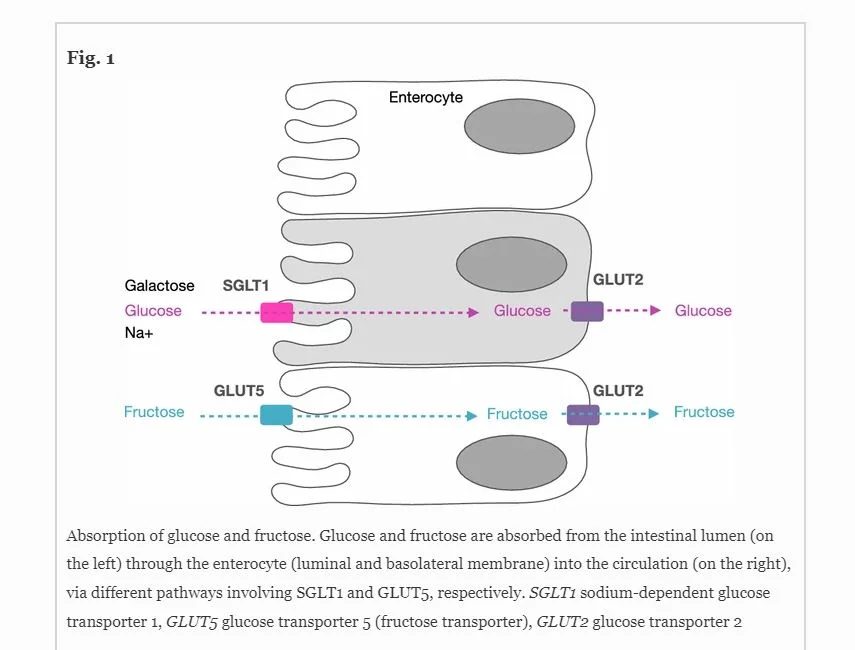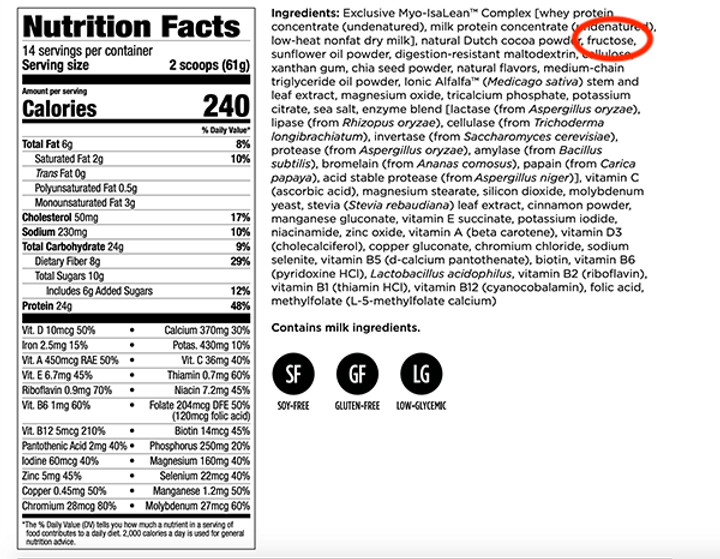…and are endurance athletes “getting enough” fructose?
In the last couple articles, we’ve been breaking down the nutrition confusion surrounding sugar. As a reminder, we don’t demonize food groups at Hope Wellness and we try to instill in you that same relationship with food. Instead, we educate you about what certain foods are doing in your body so you can better learn to observe how they affect you and your long-term health.
In part one, we learned all about the types of sugar, what the recommended amount of sugars are to consume, and the consequences of excess sugar. In part two, we learned all about natural sugar substitutes and non-caloric sweeteners.
This time, we’ll focus on fructose, a sugar that comes from fruit, and answer the perennial question: Is there too much sugar in fruit?
We’ll also break down the differentiating details about fructose that apply to endurance athletes training for high-intensity events for long durations like road cycling, running a marathon, Ironman triathlons, and ultra-running.
First, let’s remember that ultimately, all types of carbohydrates are broken down into simple sugars and their non-digestible components (in the case of complex carbohydrates like fiber-rich fruits and vegetables, beans and whole grains).
Second, remember that consuming excess sugar can contribute to: high cholesterol, high triglycerides, fatty liver, fat deposits in the muscle tissues, impaired blood sugar and insulin, high blood pressure, increased fat tissue (particularly belly fat), and increased chronic disease risks such as diabetes and other cardiovascular diseases (1).
When it comes to simple sugars, it’s important to know that fructose is absorbed differently than glucose and galactose.
In the diagram below, you can see that fructose, glucose, and galactose are all assisted from the small intestine into the blood through transporter molecules. SGLT1 is the transporter for glucose and galactose, and GLUT5 is the transporter for fructose. GLUT2 transports all of them.

To put this diagram in context, the finger-like end of the “enterocyte” is the villi in the small intestine which absorb nutrients. The Enterocyte is the cell that lines the small intestine, and the right side of the cell has glucose and fructose going into the bloodstream. You can think of these “transporters” as sugar taxis.
At a certain point, glucose absorption is limited by these sugar taxis, or transporters, and this becomes important for endurance athletes performing high intensity efforts for long durations (generally over two hours). We’ll get to that below.
As far as the scientific community has determined so far, fructose absorption via these sugar taxis is not limited. After absorption from the small intestine to the blood, fructose is transported directly to the liver. Since it is generally not found in the blood, fructose doesn’t undergo the hormonal regulation that regulates glucose balance (1). This means if you consume a lot of fructose, it can lead to high triglycerides, high LDL cholesterol, insulin resistance, fat accumulation, and the like. Recent data suggest there’s a dose-dependent relationship between fructose consumption and these poor lab markers (2), meaning the more fructose you’re eating, the more likely high triglycerides, insulin resistance, cholesterol and the like will result. But the research is also not definitive.
Okay, now we know that an excessive amount of fructose may be contributing to or causing some major health problems! Where is this the most sneaky? Check your ingredients list, particularly in processed foods, protein shakes and the like. That’s where companies will add fructose to “naturally” sweeten products or, in a less natural way, with high fructose corn syrup.. Consuming a lot of these types of foods with added fructose can negatively impact your health in the wrong context. Keep reading to learn more about what we mean by “context.”


Does Fruit Contain Too Much Sugar?
So you like to eat fruit on the regular. Fruit in your morning smoothie or oatmeal, fruit as an afternoon snack, a fruit-sweetened dessert, or a fruit-based snack bar as part of your regular eating pattern. In fact, you might be eating a very low “added-sugar” diet, but plenty of fruit.
Each type of fruit contains both differing amounts of total sugar, and of the simple sugars, fructose and glucose, respectively. They also contain differing amounts of fiber.
An example is that the average-sized (200 gram) apple contains 15 grams of fructose and about 5 grams of glucose. Similarly, the same size pear contains about 13 grams of fructose, and 4 grams of glucose. Now what about a banana? – They sure taste sweet when they’re ripe! An average banana contains 4 grams of fructose and 6 grams of glucose (3).
Remember that sugar packaged in a whole fruit with lots of fiber is going to be metabolized slower and stimulate much less of a glycemic response than the same amount of sugar from fruit juice, a pureed smoothie, or in a sugar cookie. Essentially, for most people, a whole fruit is going to hit your system differently than a processed version of it.
As usual with nutrition, the answer to whether fruit is too sugary for you is….drumroll please…It depends… Context matters. What’s the degree of processing, what type of fruit, and how much and how often are you eating it? Also, how active are you and what are your overall dietary needs?
To keep it simple, we don’t put fruit into an “off limits” or “bad” category at Hope Wellness. But we do generally recommend that you eat two to three times as many vegetables as fruit, so if you’re going to eat three servings of fruit per day – and you might be if you are highly active – you should also aim to be eating six to nine servings of vegetables.
Fructose for Endurance Athletes
As mentioned above, fructose can become an important source of fuel during high-intensity exercise for long durations. An example is that it is becoming increasingly common for marathon runners and ultra endurance athletes to be consuming 80-100+ grams of carbohydrate per hour during training and events. This extreme amount of carbohydrates fuels high-intensity performance and also helps the body recover faster.
First, tolerating that amount of carbohydrates requires practice and “gut training,” which is a topic for another day. And second, glucose uptake is limited when you exceed 60 grams of carbohydrate per hour, due to the sugar taxis (transporters) in the figure above. Therefore, fructose has to make up the difference because the third type of simple sugar, galactose, is not a good choice to consume for exercise. If you’re an endurance athlete and this section applies to you, we recommend increasing fructose consumption during exercise in a correct ratio as part of a gut-training program with the help of your sports nutrition professional at Hope Wellness.
What do we do with this info?
Simple sugars, and in particular sugar added to foods during processing, don’t generally contribute to health, and in most cases, it is best to limit them in the daily diet. An exception to this is that consuming fast-absorbing simple sugars during high intensity exercise enhances performance in endurance athletes – and for some athletes, training the gut to take in more fructose may improve performance and recovery.
As far as the sugar in fruit goes, we don’t have definitive answers from the current research pointing to fructose as “bad” and that we should always limit it. Just be aware that fructose is absorbed and used in the body differently than glucose, and when you overdo it (usually in fruit juice or processed foods and drinks), that can contribute to health challenges.
Want to know more?
Join the Hope Wellness newsletter to get a reminder about future articles or read Part 1: How Much Sugar Should We Be Eating Anyway, or Part Two: Are Alternatives to Sugar Any Better or Worse Than Sugar?
Join the Hope Wellness newsletter to be the first to get access to more future articles and to hear more about a new group program focused on reversing diet culture mentality damage and transforming your relationship to food. We’ll be launching the program in the new year. Stay tuned!
Know that we are here anytime you need us and, to start, all you have to do is set up a complimentary discovery call with one of our team members.





